Testing is done on the latest mainstream Intel and AMD platforms, both overclocked to their respective maximum achievable with ambient cooling. As benchmarks we use Geekbench 3 64-bit in version 3.4.3, AIDA 64 Cache & Memory Benchmark in version 6.30.5500 and Cyberpunk 2077 with patch 1.06 and the preset “Raytracing: Ultra”, for clarity today only in 1080p and 2160p. As benchmark for Cyberpunk 2077 we use a 60-second driving and running course around the “Kabuki Market”, which allows us to reproducibly examine the various hardware requirements of this title. The data was recorded and measured with the Nvidia Frameview tool, based on the open-source software PresentMon. Several runs were tested in each case and the results averaged accordingly.
The complete hardware of the test systems can be read here:
| Test systems | |
|---|---|
| Hardware: |
AMD Platform: Intel Platform: Nvidia GeForce RTX 3090 Founders Edition graphics card |
| Cooling: |
TechN CPU Waterblock AMD AM4 CPU block Supercool Computers Direct Core MARK 6 CPU block |
| Housing: |
Open Benchtable Lian-Li O11 Dynamic |
| Periphery: |
Benq XL2720 monitor Acer XB270HU monitor |
XMP Comparison – Out of the Box Performance
First, let’s look at the performance with the XMP profile loaded, compared to other DDR4 products previously tested. By the way, the compatibility was flawless, both on AMD and Intel test system could be booted from the XMP profile without having to make further settings in the BIOS. The stability in the XMP with 1.5V was also not affected at any time thanks to the lush heatspreaders. Here G.SKILL has done a great job.
For better clarity, the memory products in the diagrams are abbreviated as follows:
- GTZN: G.SKILL Trident Z Neo
- PVSR: Patriot Viper Steel RGB
- GVK: G.SKILL Ripjaws V
- CB: Crucial Ballistix
Furthermore, the following abbreviations were used:
- 3200/3600/3800/4000: The respective DDR4 clock rate specified in MT/s
- CL: CAS Latency, the first primary timing
- SR: Single-Ranked
- DR: Dual-Ranked
- 5950X: Test system with AMD Ryzen 9 5950X CPU
- 10900K: Test system with Intel Core i9 10900KF CPU
So here we go, first with the synthetics and finally a bit of cyberpunk.
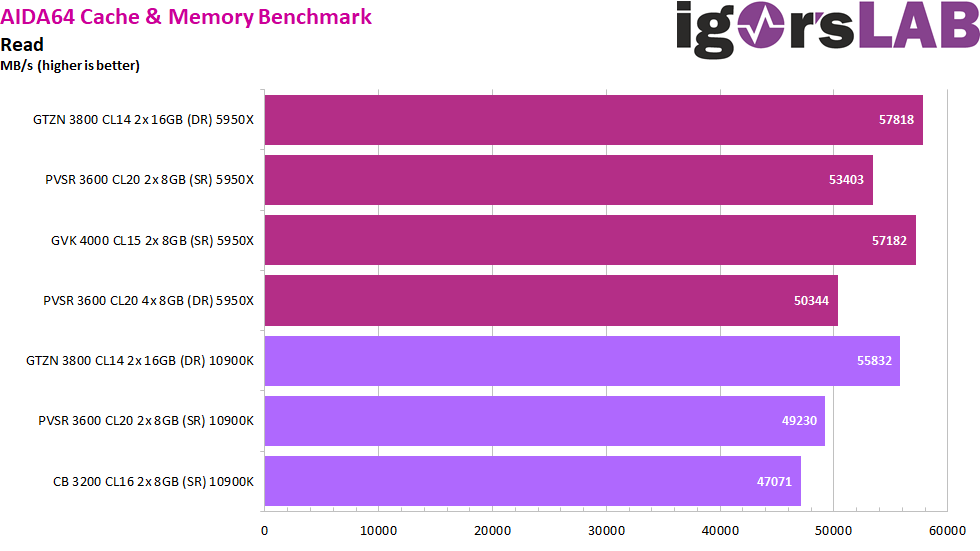
In today’s AIDA64 read test, the kit clearly stands out from the competition. Actually logical, because on AMD the bandwidth is anyway limited by the FCLK and thus the kit benefits here especially from its timings. And on the Intel side I haven’t yet tested a kit with comparable performance.
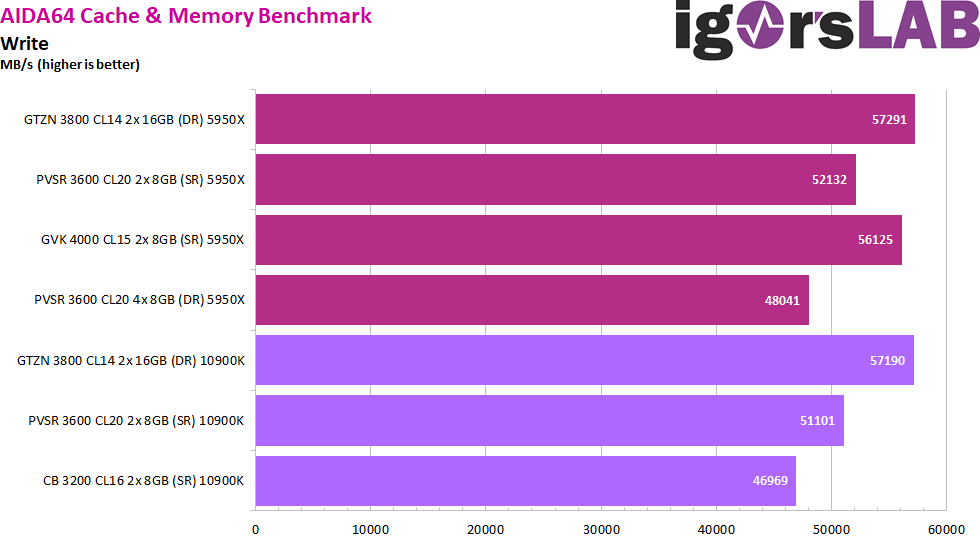
In the write test, the story is virtually identical, with only G.SKILL’s smaller single-rank variant with the Ripjaws V DDR4-4000 coming close to keeping up. Also the Patriot Viper Steel RGB with 4 modules and thus also in the dual rank are far behind.
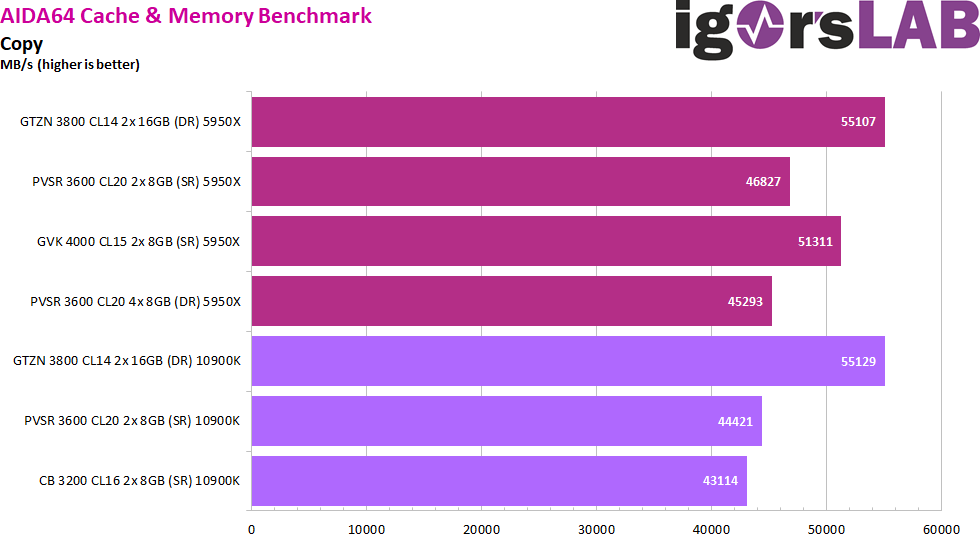
In the copy test, the gap is even larger, because here, in addition to the low latency, the dual-rank also comes into play, where the ranks effectively alternate and can thus process the read and write commands faster.
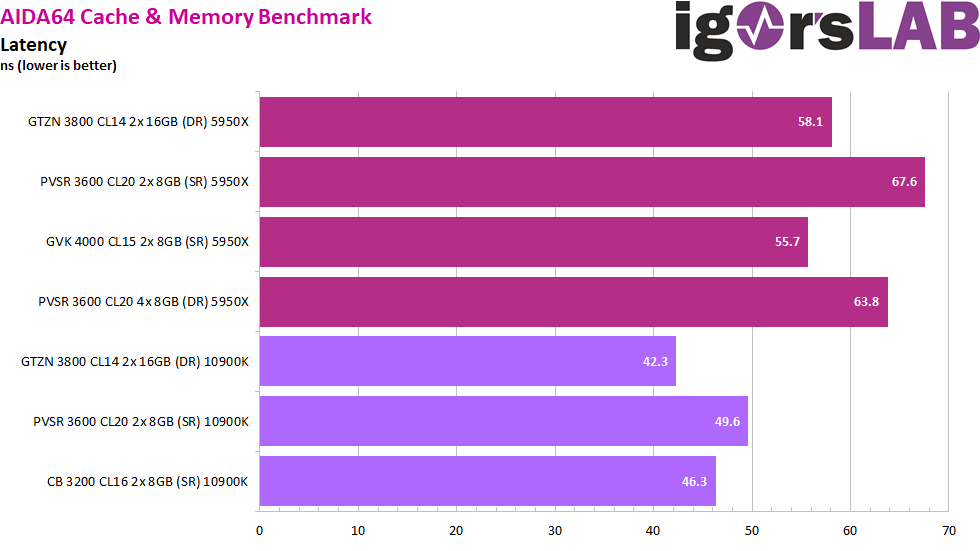
In the latency test, the GVK Sinlge-Rank Kit technically has a small advantage, which is also noticeable in the results, but thanks to the tight timings of the GTZN, the difference is relatively small and just outside the measurement tolerance.
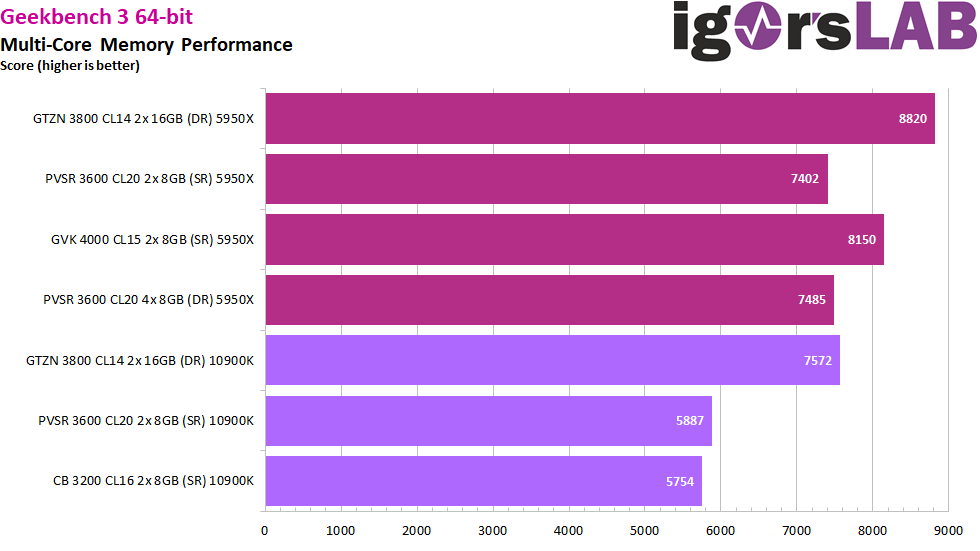
The AMD platform has a clear advantage in Geekbench 3 due to the large cache. But even here the performance of today’s test kit from G.SKILL is second to none.
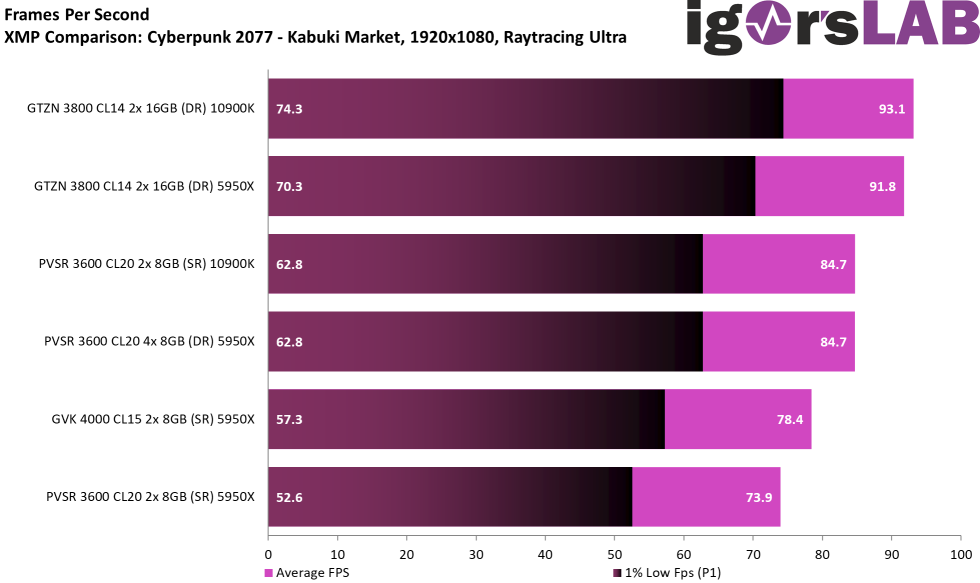
Then in Cyberpunk 2077 all the advantages come together, similar to the Geekbench 3 or AIDA64 Copy Test. In 1080p, the G.SKILL Trident Z Neo kit can clearly stand out from the other products, both in the Average FPS, as well as in the 1% Lows.
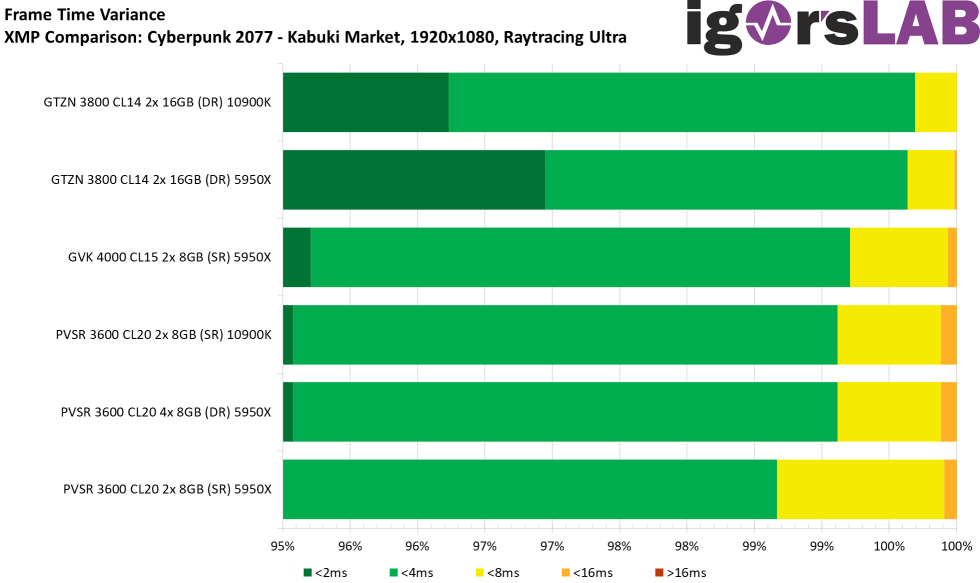
Even with the frame time variance, the GTZN has an advantage in the form of noticeably fewer frame times greater than 4 ms, while the other kits are largely at the same level.
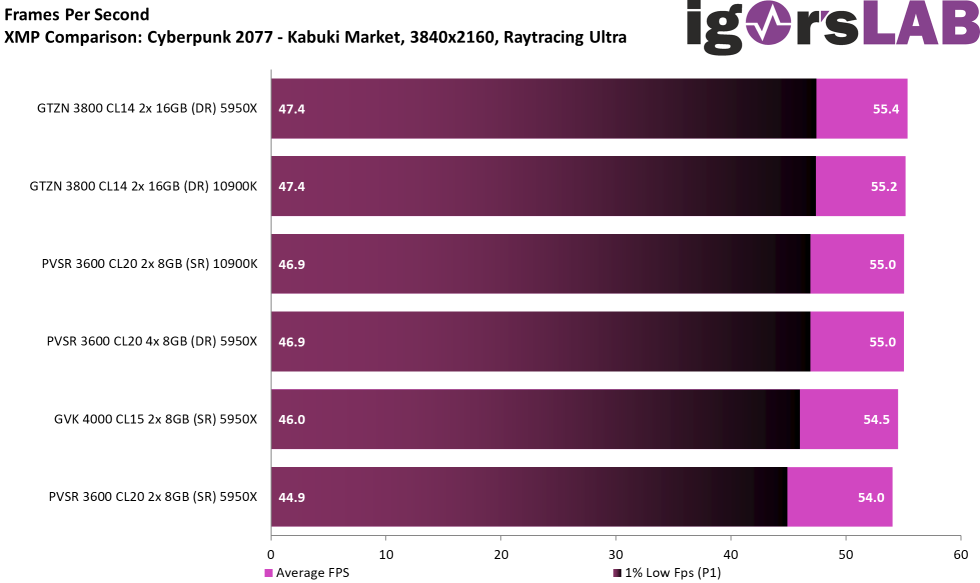
In UHD, of course, we are largely GPU-limited and advantages in RAM and CPU become vanishingly small in Average FPS.
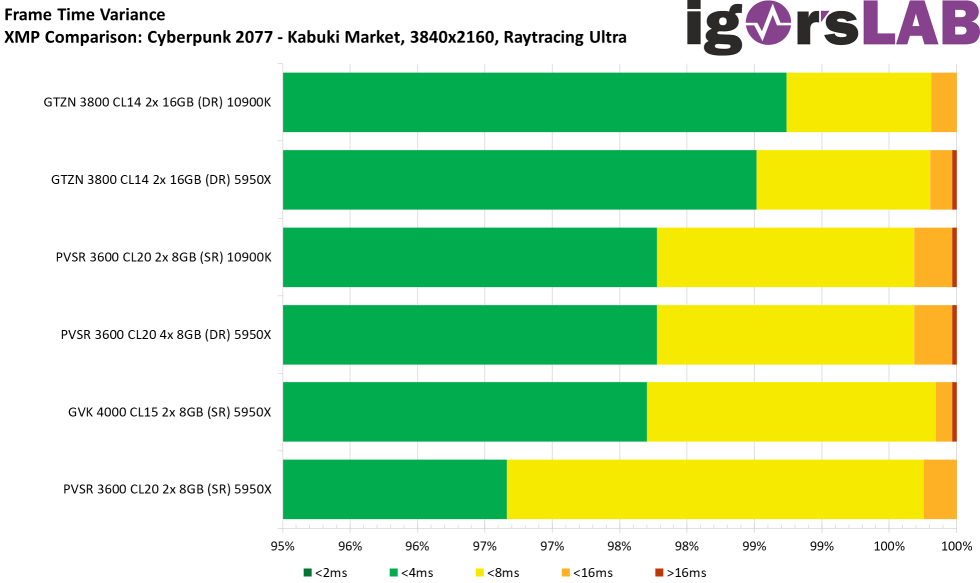
On the other hand, we again see a clear advantage for the GTZN kit in the frame time variance, which can clearly distinguish itself from the other kits on both test platforms in the XMP.
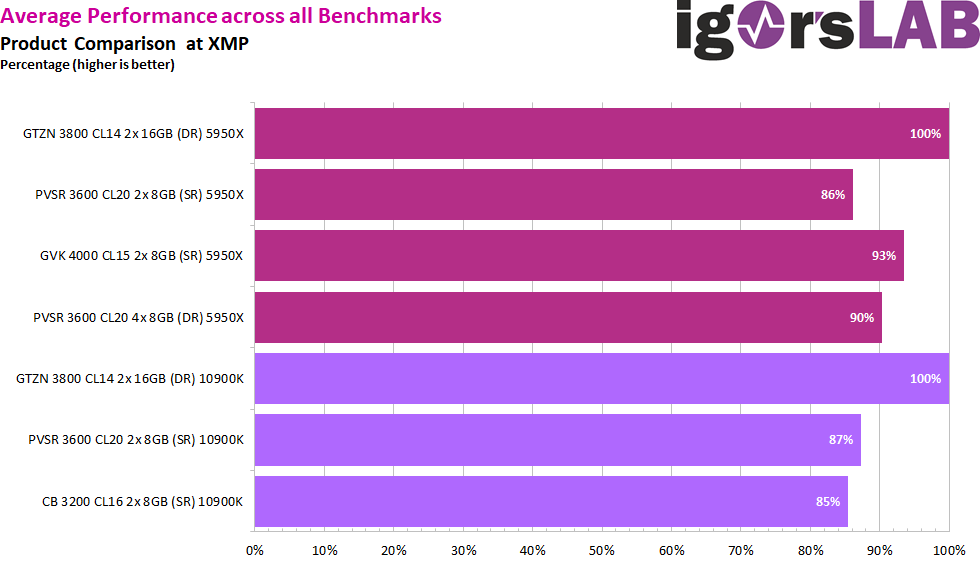
If we cumulate the performance in all benchmarks together, separately for AMD and Intel of course, and use the GTZN kit as 100% reference, we see a clear advantage over all other tested configurations. Considering the XMP specifications, however, this was to be expected.

































Kommentieren